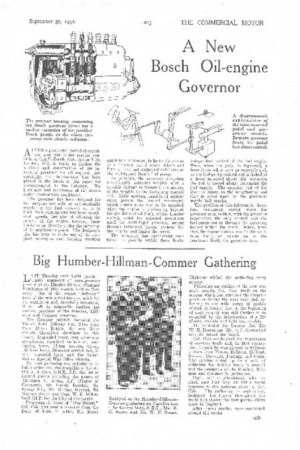A New Bosch Oil-engine Governor
Page 43

If you've noticed an error in this article please click here to report it so we can fix it.
A FTER a protracted period of experiment and test under service conditions, C.A.V.-Bosch, Ltd., Acton Vale, London, W.3, is ready to disclose the working and construction of its ingenious governor for oil engines. Accordingly, full information has been placed in the hands of this paper for announcement to the industry. We have also had experience of the device under road-service conditions.
The governor has been designed for the purpose not only of automatically regulating the fuel delivery so as to limit the maximum and minimum crankshaft speeds, but also of allowing the control of the engine between these limits to be directly under the influence of the accelerator pedal. The designer's aim has been to make use of the simplest principles and, keeping workbag parts to a minimum, to house the device in a compact metal cover, which will form a neat and dustproof extension of the well-known Bosch fuel pump.
In principle, the governor comprises centrifugally actuated weights with a suitable linkage to transmit the motion of the weights to the fuel-pump control rod. Light springs, capable of adjustment, govern the inward movement, which causes more fuel to be supplied When the engine is slowing up beyond the pre-determined limit, whilst heavier springs resist the outward movement until the centrifugal pressure, acting through hell-crank levers, reduces the fuel supply and limits the speed.
The company has ingeniously contrived to provide within these limits independent control of the fuel supply. Thus, when the pedal is depressed, a lever is caused to turn an eccentric and, as the fuel-pump control rod is linked to a lever mounted about this eccentric, the rod is moved along, increasing the fuel supply. The opposite end of the lever is linked to the longitudinal rod that is acted upon by the governorweight bell cranks.
The position of this fulcrum is, therefore, stationary, except when the governor acts, so that, with the governor inoperative, the only control over the fuel-pump rod is through the eccentric housed within the lever. When, however, the engine slows down to the minimum limit, or speeds up to the maximum limit, the governor acts.






































































































